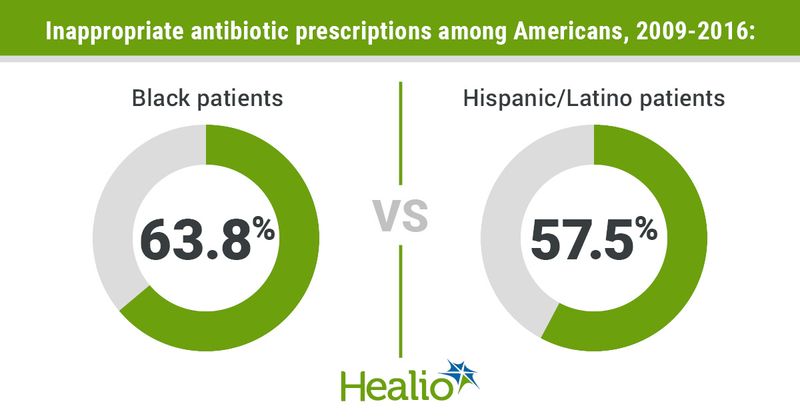Study finds racial, ethnic disparities in inappropriate antibiotic prescribing
Click Here to Manage Email Alerts
LISBON, Portugal — A study found a high rate of inappropriate antibiotic prescribing among Black and Hispanic/Latino patients in the United States, researchers reported at the European Congress of Clinical Microbiology and Infectious Diseases.
According to the CDC, 80% to 90% of antibiotics use in the U.S. occurs in the outpatient setting.

“We know that physicians typically send patients home with antibiotics if they suspect their symptoms may lead to an infection,” Eric Young, PharmD, a PhD candidate in pharmaceutical sciences at the University of Texas Health Science Center in San Antonio, said in a press release announcing the findings. “This practice becomes more common when patients are unlikely to return for a follow-up visit, which more frequently happens in minority populations.”
Young and colleagues conducted a cross-sectional study using the CDC’s National Ambulatory Medical Care Survey from 2009 to 2016. They authors defined antibiotic use as at least one antibiotic prescription ordered per visit by the antibiotic’s Multum codes and prescribing as visits that included an antibiotic per 1,000 total patient visits. They classified prescriptions as appropriate, possibly appropriate, or inappropriate, and evaluated use by race, age and gender.
More than 7 billion patient visits were included in the analysis. Of those, 11.3% included an antibiotic prescription. Overall, antibiotic prescribing was highest among Black (122.2 per 1,000 patient visits) and Hispanic (138.6 per 1,000) patients. Overall rates were also high among patients aged 17 years or younger (114.1 per 1,000), as well as in females (169.6 per 1,000).
When reviewing office visits for Black and Hispanic patients, the authors reported that 63.8% and 57.5% of antibiotic prescriptions were inappropriate, respectively. Patients aged 65 years or older and males had the highest rates of inappropriate antibiotic prescribing (73.9% and 57.7%, respectively).
“In older adults, inappropriate prescribing in primary care is associated with a wide range of adverse outcomes, including emergency hospital attendances and admissions, adverse drug events and poorer quality of life,” Young said. “Our results underscore that strategies to reduce inappropriate prescribing must be tailored for outpatient settings.”

